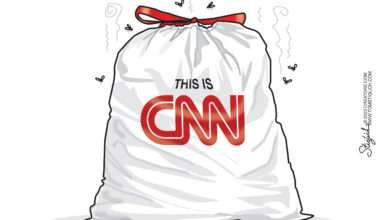Federal Reserve Struggling to Create Inflation
The specter of deflation is looming. Federal Reserve chief Ben Bernanke, the President’s economic advisor Paul Volcker (remember him from the Carter years?), and Treasury’s Timmy Giehtner are all worried that the inflation they have been trying so hard to elicit isn’t coming fast enough – or at all.
While inflation is what happens when too many dollars are chasing too few goods, deflation is the opposite.
According to about.com, inflation is caused by:
- The supply of money goes up.
- The supply of other goods goes down.
- Demand for money goes down.
- Demand for other goods goes up.
So one could draw a conclusion about the inverse – that deflation is caused by (parenthesis mine):
- The supply of money goes down (hmm, let’s talk about this one).
- The supply of other goods goes up (inventory growth – CHECK!).
- Demand for money goes up (people want more money than is available – credit crunch – CHECK!).
- Demand for other goods goes down (commodity implosion, consumers not spending, etc – CHECK!).
Let’s break down the criteria:
Money Supply Declines While Demand for Money Increases
With all the money the government has been printing, shouldn’t it all have come out in the wash? Sure, except Obama’s financial reform has put lenders and creditors in the mood to just hang on to their money. This post in the Telegraph illustrates just how quickly the money supply is being depleted:
The stock of money fell from $14.2 trillion to $13.9 trillion in the three months to April, amounting to an annual rate of contraction of 9.6pc. The assets of insitutional money market funds fell at a 37pc rate, the sharpest drop ever.
“It’s frightening,” said Professor Tim Congdon from International Monetary Research. “The plunge in M3 has no precedent since the Great Depression. The dominant reason for this is that regulators across the world are pressing banks to raise capital asset ratios and to shrink their risk assets. This is why the US is not recovering properly,” he said.
The U.S. government has stopped tracking M3, they say because it’s too volatile (which the next graph will disprove). I believe they just don’t want to have to address the fear that having to report on it would create. Since they don’t track it, they don’t have to talk about or react to it. At Now and Futures, they decided to track it themselves and the chart they produced shows that the pace at which the money supply is dropping is alarming at best:

There is also the issue of the availability of credit. The sweeping regulations that the Obama administration has pushed for and gotten have paralyzed the credit markets. Banks will only lend to the most credit-worthy and are being forced to hold historically high asset-to-credit ratios. Small businesses and consumers can’t borrow even if they want to – in the case of small and medium businesses, they need to. It just plain is getting harder to get the money we need.
Demand for money: up, supply down.
Supply of other Goods Rising vs. Demand for Goods Stays Low
There are both supply side and buy-side issues that are causing the over-supply issue. Manufacturers built up inventories anticipating the “Recovery Summer” that the White House promised them and consumers aren’t buying. According to Economic Populist, the consumer confidence index is taking a nosedive:
The Index now stands at 52.9 (1985=100), down from 62.7 in May. The Present Situation Index decreased to 25.5 from 29.8. The Expectations Index declined to 71.2 from 84.6 last month.
The latest GDP number showed a disconcerting decline in consumption. The 2.4% overall number isn’t something that indicates much more than the economy treading water and certainly demonstrates weakening demand for our goods. As the New York Times put it
Recent data suggests that consumers are using any extra cash they have to pay down debt or put into savings. That places a strain on an American economy that has become hugely dependent on consumer spending.
On Tuesday, the Commerce Department reported that Americans saved 6.4 percent of their after-tax income in June, in contrast to the years before the recession, when savings rates stood at 1 to 2 percent.
Last month, the Federal Reserve reported that consumer debt dropped by 4.5 percent in May, a $9 billion decline. It was the 20th consecutive month that figure has dropped. In 2007, consumer debt jumped by 5.7 percent or nearly $40 billion.
The weakening demand works its way down the supply chain down to even the most basic of commodities. Gasoline stockpiles are rising because refiners ramped up production without an increase in demand.
Supply of goods: Up, demand: down.
So manufacturers have produced goods thinking the recovery has come (it didn’t), consumers have either decided to hang on to their cash or been unable to obtain credit from banks that want to hang on to theirs. With our fractional reserve economy, lending creates money – if no one borrows, less money is created. We now have too many goods with too few dollars chasing them: Deflation.
Why would the government want to create and grow inflation? As Rand Paul puts it, “The government wants inflation because they can never pay this debt, so they look for a devalued currency because you pay back ten cents on the dollar it’s not as big a difficulty in paying off the debt.” In Obama-speak, this gives the socialist-progressives more space within which they can enact huge government programs. If the deficit gets too ridiculous, they get voted out and the progressive drunk-fest comes to an end.
Obviously, deflation does the opposite – our debt becomes impossible to pay back and the progressive elitists won’t have the money or political capital to complete the final crisis that would “fundamentally transform” America.
We know why the government is doing what they do. Now.. what do we do?
Run, hide. Ok.. none of those unless you’re being chased by a large carnivore. During inflation, holding debt isn’t bad. You have an asset that is holding its value while your money becomes worth less (hopefully not worthless). So you’re house is worth $100,000, during the inflationary period, money becomes less worthy. Your house does not. If things level out with 10% inflation, you are the owner of a $110,000 dollar house the next year. You could sell the house and even though each dollar is worth 10% less, your house maintained it’s relative value so you get 10% more for it. The decline of the currency did not affect your house at all, just any cash you hold or things you purchase as new with it.
During deflation the opposite is true, debt is terrible (and even worse on depreciating assets: cars, electronics, etc). You have a $100,000 house, you pay on it over time. Once things level out.. you have a house worth $50,000 house but still have a $100,000 mortgage. They have a cool term for that now: under water. 50% of your wealth has just drowned in your under water mortgage, and that’s the best situation. Now you have to pay $100,000 (plus interest) for a $50,000 asset. The real kicker is it will become much harder to get the dollars you will need to pay your mortgage in a deflationary environment (remember, money supply = down). When deflation is on the horizon, get rid of debt.
Some will tell you gold is a hedge against deflation.. the same people that said it was a hedge against inflation: those who want you to help keep its price high while they sell it. Gold is a terrible play during deflation. You are buying a $100 coin at $100 today, in 6 months, it will be worth $50, but there won’t be very many dollars out there looking to buy your gold. Now you’re stuck with something you can’t sell, can’t eat, and can’t use.. how does that work for you? This holds true for any commodity. Deflation means the buying power of cash is strengthened and the price of commodities and other goods drops.
As this Bloomberg.com post points out, deflation will put upward price pressure on bonds. To keep borrowing costs low, they have to keep yields down and the Treasury has few tools left. This will drive bond prices up and there interest rates lower.
“The U.S. is closer to a Japanese-style outcome today than at any time in recent history,” Bullard said, warning in a research paper released yesterday about the possibility of deflation. “A better policy response to a negative shock is to expand the quantitative easing program through the purchase of Treasury securities.”
If you agree that a bout of deflation is in the cards, and you want to invest some of it, put your money in .. well.. money: U.S. Treasuries. The yields are terrible, but the price pressure will be dramatic and the U.S. government will create money if it has to in order to pay you. If it hits, commodities (gold, oil, gasoline, wheat, etc) will take a serious hit – stay away from those. Other than that, emerging market stock funds may be a play in anything other than a serious global deflationary trend.
If you are betting on the outright collapse of the currency, gold gets no better. You can’t eat it, the supply of it is controlled under suspicious conditions and it’s worthless in a barter system. Look at the Confederate states during and after the civil war.. barter.. not gold was the method of exchange.
Being cash-rich and debt-free is the way to ride out a deflationary period. You’ll have what everyone else needs – dollars. Law of supply and demand puts you in the driver’s seat.





The national economy, since 1913, is based upon a Ponzi scheme.
Every “dollar” in circulation is created based upon debt. Congress gives T-securities (bills, bonds, or notes) to the Federal Reserve, and the Fed credits the Treasury’s account with the value of the securities. Voila !!! New fiat money. Congress can spend up to the limit of the account and the Fed will honor the checks.
The problem is that the arrangement obligates the US to pay interest on the principal thus generated. The interest has never been generated. It does not exist. It is impossible to culminate the agreement. The only way the interest can be paid is to generate more principal and pay the interest on the initial securities from the principal on the later securities. It is the classic Ponzi, par excellence.
If a Ponzi scheme does not expand, it totally collapses. Additional expanding at this time merely postpones the inevitable collapse.
Additional expounding on the mathematical rip-off by the Fed, including how the Fed obtains the ENTIRE VALUE of ALL issued securities is posted at https://www.scribd.com/doc/43482648/rip-off-by-the-FR
and https://www.scribd.com/doc/43465593/QE2-Rational-Course-of-Action